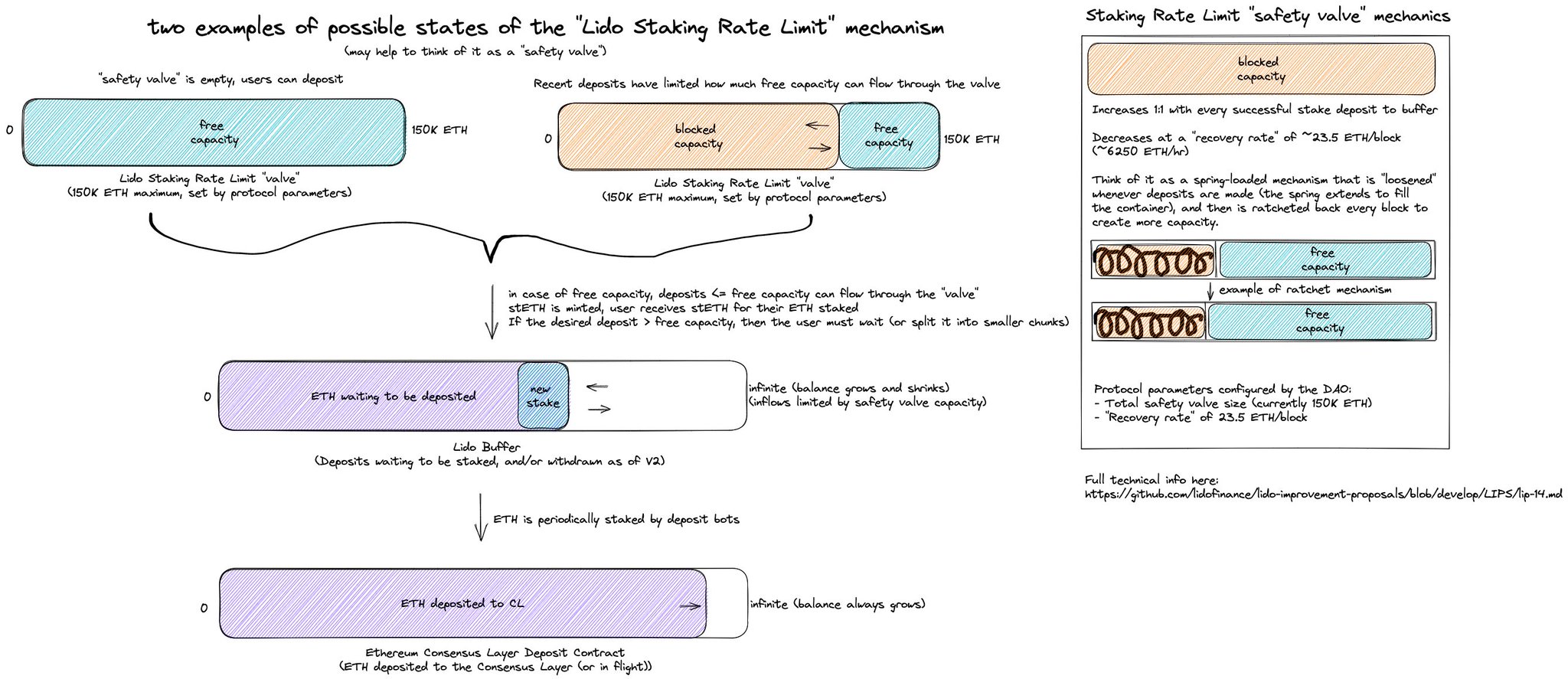On Saturday, the liquid staking protocol Lido tweeted about the largest daily stake inflow to date as 150,000 ethereum was staked. Reports indicate that the ethereum, worth more than $240 million, belongs to Justin Sun, founder of Tron.
Liquid Staking Protocol Lido Records 150,000 Ether Inflow
Lido, the liquid staking platform with the highest amount of ethereum (ETH) value locked, noted that it received the largest daily stake inflow to date, with 150,000 ether worth $240 million. “Lido protocol has registered its largest daily stake inflow so far with over 150,000 ETH staked,” Lido said. “Upon reaching this number, a curious (but important) protocol safety feature called Staking Rate Limit was activated.”

Lido stated that the Staking Rate Limit is a dynamic mechanism that manages large inflow spikes by reducing the chance of diluting value without explicitly pausing stake deposits. In the last 24 hours, Lido’s total value locked (TVL) experienced a 2.09% spike, according to statistics. Over the last month, Lido’s TVL increased by 9.02% to $8.93 billion.
Tron Founder Reportedly Deposited the Ether
Of the total $8.93 billion, $8.7 billion is in staked ether (STETH), making it the 12th largest crypto asset in terms of market capitalization. According to Hildobby, a researcher and data analyst at Dragonfly Capital, the 150,000 ETH deposit into Lido was reportedly made by Justin Sun of Tron.
“Today [Justin Sun] staked 150K [ether] through [Lido Finance] (~0.9% of all staked ETH). This is now the highest week by staked amount in almost a year,” Hildobby said. “This is now the largest daily stake inflow for Lido, it also activated Lido’s rate limit feature for the first time,” the researcher added.
In January 2023, Lido announced plans to create a withdrawal feature for ethereum deposits ahead of Ethereum’s Shanghai hard fork, expected to occur in March. “The process has to be asynchronous, due to the asynchronous nature of Ethereum withdrawals,” explained the Lido developers at the time.
What are your thoughts on Lido’s largest daily inflow of ether? Let us know what you think about this subject in the comments section below.
Image Credits: Shutterstock, Pixabay, Wiki Commons
Disclaimer: This article is for informational purposes only. It is not a direct offer or solicitation of an offer to buy or sell, or a recommendation or endorsement of any products, services, or companies. Cryptox.trade does not provide investment, tax, legal, or accounting advice. Neither the company nor the author is responsible, directly or indirectly, for any damage or loss caused or alleged to be caused by or in connection with the use of or reliance on any content, goods or services mentioned in this article.




